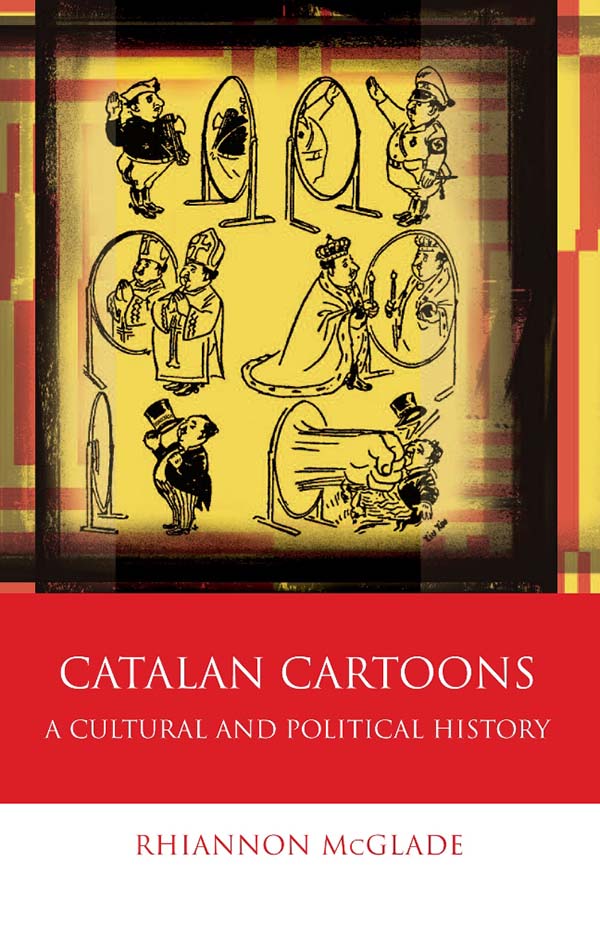Catalan Cartoons
A Cultural and Political History
Awdur(on) Rhiannon McGlade
Iaith: Saesneg
Dosbarthiad(au): Modern Languages, Philosophy
Cyfres: Iberian and Latin American Studies
- Chwefror 2016 · 272 tudalen ·216x138mm
- · Clawr Caled - 9781783168040
- · eLyfr - pdf - 9781783168057
- · eLyfr - epub - 9781783168064
Mewn byd sy’n rhoi ei fryd fwyfwy ar y gweledol, mae ein dealltwriaeth o rôl a dylanwad comics a hiwmor cartŵn mewn diwylliant poblogaidd wedi dod yn hanfodol. Mae'r llyfr hwn yn cynnig ffocws beirniadol a gwybyddol sy'n cyfleu ffawd newidiol y gwaith o gynhyrchu hiwmor Catalaneg yn erbyn tirlun gwleidyddol newidiol y cyfnod rhwng 1898 a 1982. Mae'n ystyried sut mae dychan Catalaneg wedi dod dan ddylanwad cyfnodau o lonyddwch cymharol yn ogystal â sensoriaeth, trais, rhyfel ac unbennaeth, ac un o’i nodweddion allweddol yw ei ffordd o gyflwyno traddodiad o greu cartwnau sy’n parhau ac na ddaeth i ben gydag unbennaeth Franco, ond yn hytrach a lwyddodd i barhau mewn nifer o ffurfiau a addaswyd, gan gyfrannu yn ei ffordd ei hun at esblygiad y cyfnod. Felly, yn ogystal â chyflwyno'r cartwnwyr a’r cyhoeddiadau mwyaf cynrychioliadol, defnyddir yr enghraifft Gatalanaidd i archwilio agweddau ehangach ar y ffurf gymhleth hon o gyfathrebu, gan agor llwybrau newydd ar gyfer ymchwil ddiwylliannol, hanesyddol a chymdeithasol-wleidyddol.
Introduction
The Nature of Humour: Some Theoretical and Definitional Guidance
The Catalan Context
Directions
Notes
Chapter One: The Golden Age of Catalan Political Cartoons (1898-1931)
The Pre-Twentieth-Century Catalan Satirical Tradition
The Legacy of 1898 and the fets de Cu-Cut!
The fets de Cu-Cut!
The Vilification of Alejandro Lerroux
In Search of the Funny-side of the Setmana Tràgica
Papitu
Satire and Censorship
The Rise of Syndicalism and the Primo de Rivera Dictatorship
Chapter One Images: Figures 2.1 to 2.9
Notes
Chapter Two: Catalan Cartoon Humour and ‘Otherness’ in the Second Republic and Civil War (1931–1939)
The Second Republic and the Catalan Statute of Autonomy
The Second Republic and the Satirical Press
El Be Negre
Gutiérrez and the 1932 Statute of Autonomy
The fets d’octubre and the bienni negre
The Fall of Lerroux
The Spanish Civil War and the Framing of ‘Otherness’
The Sindicat de Dibuixants Professionals
Chapter Two Images: Figures 2.1 to 2.12
Notes
Chapter Three: Humour Under Franco Part I: Continuing a tradition (1939–1962)
The Post-war Period at Home
The 1938 Press Law
The Church and the Humour Press
Humour in the Clandestine Press
La Bruguera and TBO
Children’s Comics
The Challenge Facing Cultural Production in Exile
Tísner in Exile
Chapter Four Images: Figures 3.1 to 3.9
Notes
Chapter Four: Humour Under Franco Part II: From Fraga to freedom (?) (1962–1975)
Comics and the Revival of the Catalan-Language Press
Bruguera and the DER
The Ley Fraga
The Application of Censorship
Humour in the Press
Censorship: A case study
Chapter Four Images: Figures 4.1 to 4.6
Notes
Chapter Five: Humour and the Transition to Democracy (1975–1982)
Humour Publications of the Transition
The El Papus Bombings
Solidaridad con El Papus
The 1978 Constitution
The Catalan Statute of Autonomy
Reception of the Statute in the Press
The ‘Tejerazo’ of 1981
Reactions to the Tejerazo in the Satirical Press
The ‘End’ of the Transition: PSOE electoral victory 1982
Chapter Five Images: Figures 5.1 to 5.8
Notes
Conclusion


